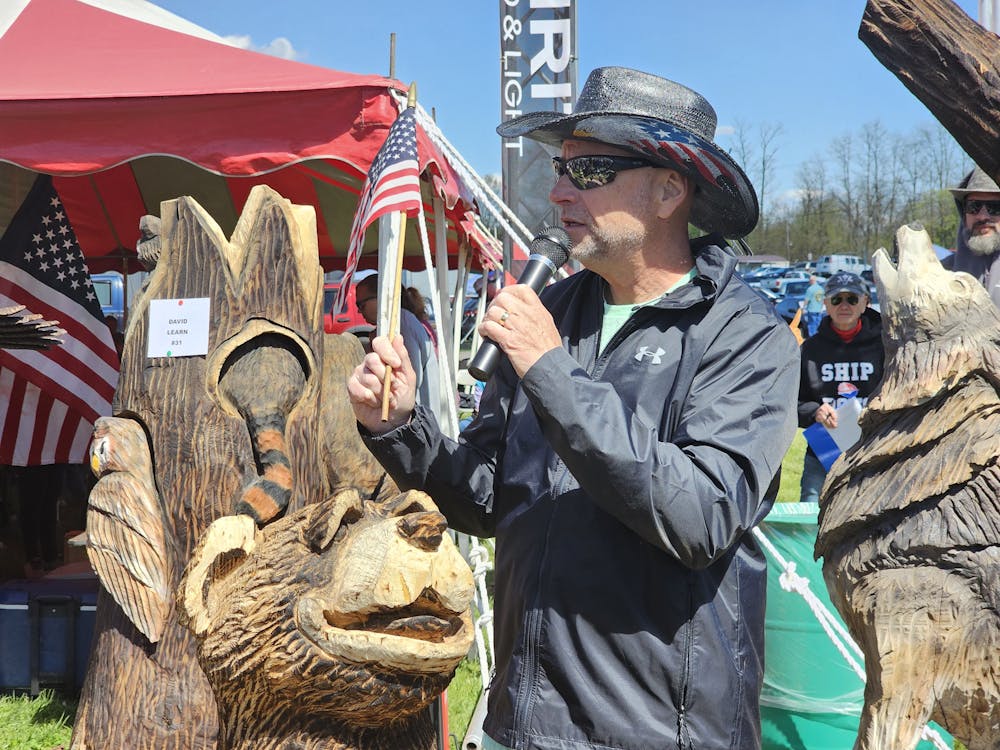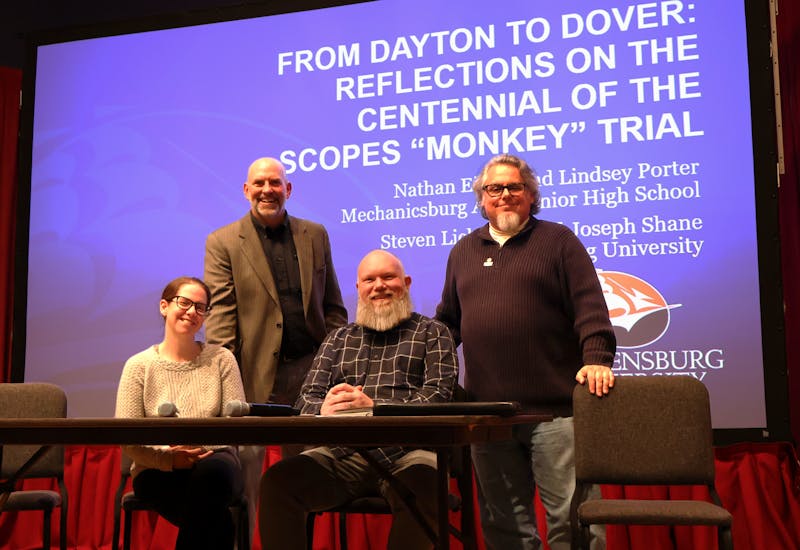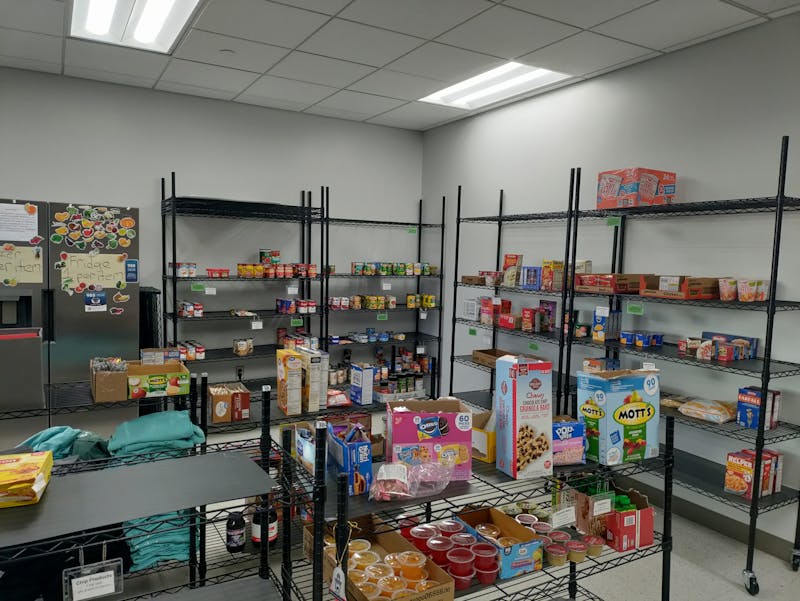The fourth annual Central PA Chainsaw Carvers Festival took place at the Shippensburg Fairgrounds last week.
The event, hosted by the Shippensburg Area Chamber of Commerce, featured vendors, food, music and wood carvings made by artists both local and international.
One such commuting artist was Jonny Stableford, who sells by the moniker Jonny Chainsaw. He made the trip to the festival this year from Falkirk, Scotland. This was his second venture to the U.S. for carving this year, he says.
Stableford says that he was last in the country back in January, when he traveled to the World Ice Carvings Championship in Fairbanks, Alaska.
Stableford says that he has been making wood and ice sculptures for over a decade, but that he has been working with the primary tool of his trade, a chainsaw, for 25 years.
The 41-year-old Stableford says he avoided injuries while performing his craft but says that the work often wears on the body.
“Like most people, my back is tender, my elbows are sore. My head is full of sawdust,” Stableford said. “But other than that, I’m fine. I’m fitting well.”
He will also attend the Chainsaw Carvers Rendezvous, which takes place this week in Ridgway, Pennsylvania. The event is informally known as “The Ridgway” among the carvers at the fairgrounds.
Not everyone who was at the festival was subject to the whims of the auction, though. Some carvers had stalls set up where entire collections of their work were for sale. One of those stalls was Hartley Hartwoods, the namesake business of Daniel Hartley.
Before going into the wood business, Hartley says that he owned a company that performed disaster relief on behalf of the FEMA. According to Hartley, his company would rehab areas after they were struck by storms and had suffered tree damage. While storm-stricken trees were not Hartley’s introduction to lumber, they may have inspired his craft.
“I’ve worked with wood my whole life,” Hartley says. “My dad was a cabinetmaker, built houses … so I just cut trees for 30 years, and just felt like it was something I wanted to try doing.”
He decided to give it a try 11 years ago, he said. Since then, he says that he has turned it into his full-time job.
His table filled with sculptures of woodland animals shows off his style, but he says his long-time girlfriend makes the requests.
“She tells me what she wants a lot of time, but I focus on eagles, cardinals, bears and owls,” Hartley says. “That’s what I sell the most of, and that’s what I focus on. I just try and put different poses and expressions on each one.”
Hartley’s offerings join many other stalls where carvers displayed their wares. Offerings run the gamut of small animal statues, ranging from $50 to $100, to life-sized sculptures of a skeletal gunfighter and C-3P0 of “Star Wars” fame that sell for $500 and $800.
Other large sculptures are sold to bidders at the fairground and online during the auction. One of the highest winning bids came late in the auction when an ostrich sculpture at 10 feet tall sold for $1,350.
It was not all statues, however. One stall, managed by Ron and Mark Wadel, a father-son team, found a way to turn ordinary wood into both apparel and furniture.
That store is Ron’s Wood Hats, a business that puts a wooden spin on the famous 10-gallon cowboy hat.
“You can wear it, or you can use it as a lampshade,” Mark said. “You put an LED bulb up underneath it, and the light shines through them. It just gives an ambiance to it.”
The typical process for turning wood into a hat takes a couple of days. Each hat starts out as half of a log, the Wadel’s say. The process of getting the wood ready takes 1-2 hours.
From there, the wood is taken to a lathe, a machine that can spin and shave wood.
“Once it gets on a lathe,” Mark says, it can take “anywhere from three-to-six hours on the lathe. And it has to be done that day, or the wood will dry out and not be any good.”
The process does not end there. After leaving the lathe, it enters a clamp and dries in it, which creates a curl. This portion lasts about one day.
After that, it is another three to six hours of sanding and applying a finish to the hats..
While they can be customized for size., the stock versions sold at the fairgrounds use a one-size-fits-all model. If someone needed smaller, they sell spacer padding that sticks to the inside.
While Mark sometimes mans the store, his father, Ron, makes the hats.
Ron says they learned to make the hats from a man at a trade show in Baltimore and started selling them at fairs and festivals five years ago. It is the only place to find them without calling in a custom order, Ron said.
“I don’t do any online,” Ron said as he watched the end of the auction.





The Slate welcomes thoughtful discussion on all of our stories, but please keep comments civil and on-topic. Read our full guidelines here.